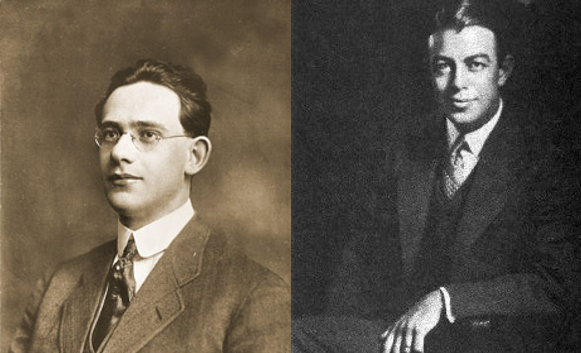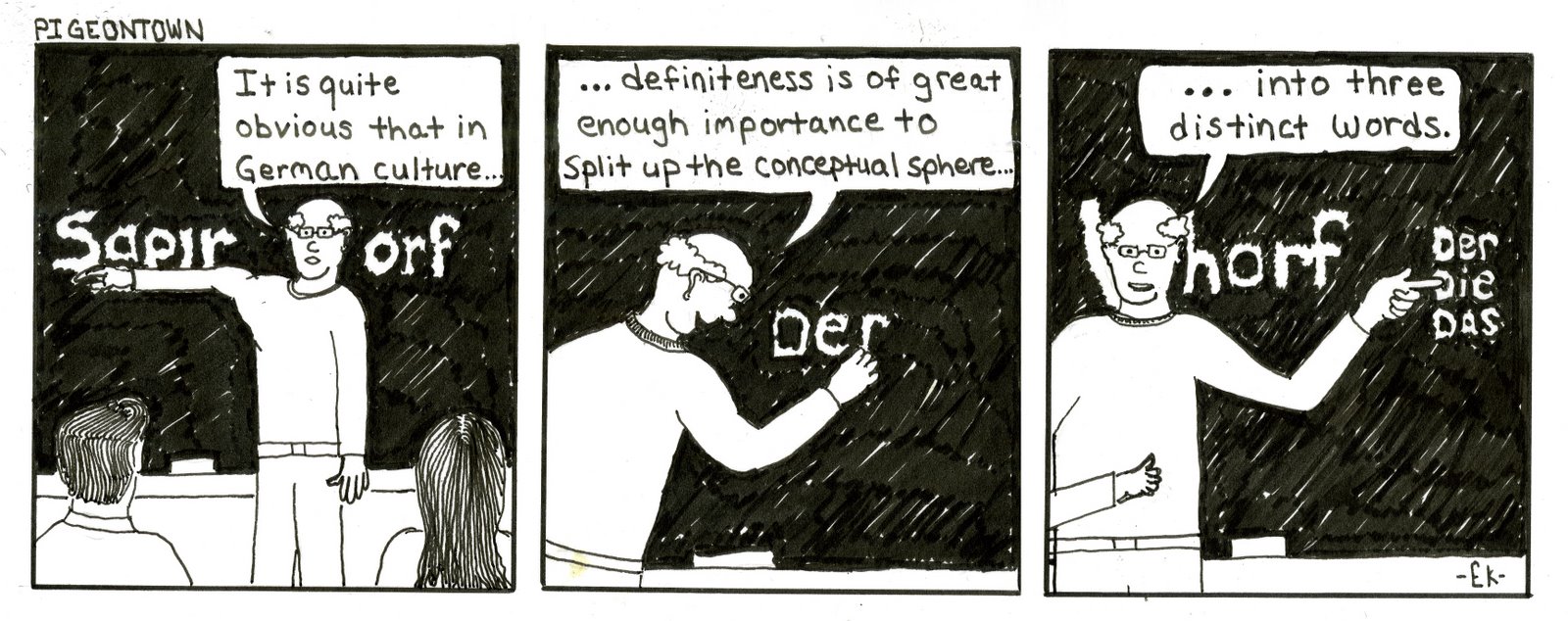Linguistic Relativism: How Language Shapes Our Worldview
Can language affect our perception of reality and shape our values?

Can language affect our perception of reality and shape our values?

Table of Contents
ToggleLanguage is a communication tool, but it also shapes the way we perceive the world. Linguists and linguistic anthropologists agree that language acquisition influences human understanding of reality, as well as the norms and values that people take for granted. It is possible to argue that language shapes the human worldview. These ideas are explained through the concept of linguistic relativism.
The concept of linguistic relativism is associated with two early 20th century thinkers: Edward Sapir and Benjamin-Lee Whorf. Early anthropologists, such as Franz Boas, have emphasized the connection between culture and language, illustrating the importance of understanding the role of language for human societies beyond purely utilitarian means. These ideas were further explored by Edward Sapir, Boas’ student and one of the most famous linguistic anthropologists of all time.

Sapir believed that the language shapes our understanding of the world by making us more aware of certain ideas and experiences rather than others. Sapir’s own student, Benjamin Lee Whorf, took this idea even further, postulating that languages shape human perception of the world to the point of determining thought. According to this idea, grammatical categories and concepts present in a language shape the manner in which people perceive the world.
For example, a language that has strict gendered pronouns might make people more aware of the concept of genders and gender differences. Such awareness might not exist among speakers of a language that does not contain such pronouns.
These ideas became known under the name of Sapir-Whorf hypothesis, but it is important to know that Sapir and Whorf never formulated a specific theory together. Whorf simply called it “the linguistic relativity principle”, as a link to (then) newly proposed Einstein’s theory of physical relativity.
What is the Sapir-Whorf hypothesis of linguistic relativity? Unlike theories in natural sciences, the linguistic relativity hypothesis does not have strict rules. Instead, it draws attention to a connection that exists between language and worldview, inviting researchers to explore this link and its importance. It is possible to say that language, culture, and worldview are linked and intertwined, influencing and shaping each other.
Perhaps the most famous (or infamous, due to later controversy) is the example Whorf presented on the Hopi language, spoken by a Native American group in the southwestern United States. Whorf paid particular attention to the Hopi notion of time and temporality. Because this language has very different grammatical structures and words to denote time compared to European languages, Whorf asserted that the Hopi people understand and contextualize time in a radically different way than Europeans. Hopi language recognizes two distinct temporal states: one refers to things that have existed and that exist in the present; the other refers to things that do not yet exist or might not exist at all. In this way, Hopi speakers consider events and things that belong to the past and present as one conceptual category, while future ones, as well as all types of imagined events and things, belong to the other conceptual category. This is a very different approach to a typical understanding of time in the English language, where time is neatly divided into past, present, and future, while hypothetical situations are not distinctly categorized in this manner.

Whorf argued that the above example is not specific to the Hopi language, nor to the concept of temporality. According to him, all languages – particularly their grammar structures – influence the way people think and behave, which translates to different cultural norms, ideas, and values.
The case of Hopi language and time perception gained controversy later in the 20th century, primarily because of the misconception about what, exactly, Whorf claimed. Many researchers erroneously assumed that he insisted on the Hopi lacking any notion of time. This is, of course, incorrect, as many researchers pointed out: Hopi language does include words and grammatical structures to denote time, and native speakers of this language do recognize time as a concept. However, Whorf never claimed that the Hopi language lacked the concept of time; rather, he offered it as an example of linguistic relativity: how time is constructed as a concept, how the passage of time is understood, and how are past, present, and future linked in people’s minds.
Sapir-Whorf hypothesis emphasizes that things such as our background, gender, or life experience influence the way we use language. Another speaker of the same language might use it in a very different manner. How is, then, their perception of the world different than our own?
Similarities are also crucial: are there collective ways in which speakers of a language perceive the world? While each person is an individual, the Sapir-Whorf hypothesis argues that there exists a collective understanding of the world that is strongly influenced by language.
How strongly does such influence go? This remains one of the main unresolved questions of the Sapir-Whorf hypothesis. Different experts gave different opinions. There are, generally speaking, two distinct forms of the hypothesis. A weak form of the Sapir-Whorf principle simply postulates that the language has a role in shaping people’s worldview. However, a strong form of the hypothesis goes one step further: it proposes that our way of thinking is fully shaped and fixed through language. This idea is known as linguistic determinism.
The main argument behind linguistic determinism is that language, particularly grammatical structures, determine our thoughts and perception. More than just an influence of the language on our worldview, linguistic determinism argues that language effectively fixates our perception.

The principle of linguistic determinism is explored in a 2016 film “Arrival”, based on the novella “Story of Your Life” (1998) by Ted Chiang. It presents an illustrative example of the strong version of the Sapir-Whorf hypothesis, albeit a fictional one: how language acquisition can change our perception of the world, and of the time itself. In the story, linguistic anthropologist Louise Banks is tasked with deciphering the language of aliens who have visited the Earth. As she learns the language, Louise starts experiencing time in the way aliens see it: not as a lineal progression from past, through present and into the future, but cyclically, in which all points in time could be experienced simultaneously. By learning the language, Banks acquires the ability to see glimpses of future, as well as the past: her own perception of time is altered.
Of course, this intriguing concept is purely fictional, but it illustrates the important aspects of linguistic determinism: that language determines the way in which we experience the world. The “Arrival” offers a dramatic example that implies language acquisition can profoundly (and irrevocably) alter worldview and perception.
The big question, of course, remains: is linguistic determinism realistically possible? Is this, indeed, something that happens with language acquisition?
Linguists today generally agree that such a view is extreme. Linguistic determinism, or the strong version of Sapir-Whorf hypothesis, does not seem to correspond with the way humans use and experience language. There is no strict determination that would compel a language speaker into one fixed and unchangeable worldview. These arguments make a basis behind linguistic determinism criticisms. If the strong version of Sapir-Whorf hypothesis were correct, people would be unable to master a foreign language without losing their own, since each language offers a different worldview. Linguistic determinism deals with absolutes, whereas linguists emphasize the ability of language to change, shift and adapt, depending on factors such as context, speakers, or time period. None of this would be possible if strong version of Sapir-Whorf hypothesis were true.
Temporality is one of the most interesting and distinctive aspect of linguistic relativity. How do language and grammatical structures influence people’s understanding of time? This is illustrated through Whorf’s example of the Hopi language. Another example are groups that conceptualize time as cyclical rather than linear, such as the Mayan culture.
Grammatical structures can vary significantly in their conception of gender, which is another common example of the Sapir-Whorf hypothesis. Many languages recognize the so-called “grammatical gender”, a system of classification of nouns. Depending on the language, nouns can be masculine and feminine, or there might exist the third grammatical gender (neuter), or another combination of grammatical genders. In these languages, the grammatical gender is assigned to all nouns, including abstract concepts and inanimate objects. Because of this, grammatical gender can have a certain influence on how people understand different concepts. For example, in French, words for “science” and “history” are feminine – this might create very different ideas about these concepts compared to English, where these words are more often associated with masculinity.

Sapir-Whorf hypothesis of linguistic relativity might be able to explain different ways in which humans contextualize and understand colors. While physical color perception does not depend on one’s language or culture, different languages can have very different ways to describe colors. This, in turn, influences how colors are perceived. This is particularly true when it comes to color boundaries: some languages do not make a distinction between green and blue, resulting as both being perceived as different shades of the same color. Other languages might have two different words for light blue and dark blue, perceiving them as two separate colors instead of different shades of the same one.
Another domain of human experience influenced by language is kinship, or the system of social relatedness. Kinship refers to blood relations, but also social connections and roles built through marriage, as well as other types of social relations. Different languages can have very distinct words and grammatical structures to describe kinship. For example, English word “mother” signifies a specific type of a relative. However, in the Hawaiian kinship system, words for mother, mother’s sister and other women in the same generation are identical. In English, the term “uncle” does not denote a specific type of a relative. However, Sudanese kinship system type has separate words for all parents’ siblings, depending on the side of the family and gender. Similarly, in some languages, the English word “cousin” has distinctive variants, depending on the specific relation (for example, uncle’s children will be labeled with a different term than aunt’s children, and so on.)
How do these differences reflect the worldview? It is postulated that separate words denote importance of distinguishing between specific relatives. This is particularly common in cultures that display stronger extended family ties. It is also common in cultures that put more emphasis on relatedness based on gender: for example, a culture that favors the male side of the family might have more elaborate words and concepts for male relatives.
As linguistic anthropologists have demonstrated, language does play a role in the way humans experience and understand the world. The opposite is also true: the language is influenced by the world and human experience.
Of course, it is important to make a distinction between a strong and weak form of Sapir-Whorf hypothesis. Most linguists and linguistic anthropologists today agree that language does not fixate the thought and perception in a way suggested by linguistic determinism. If the idea behind linguistic determinism is abandoned, where does that leave us? While it is not likely that language determines the worldview absolutely, there are indicators that it can influence the way in which we experience the world. Linguistic relativism is important for understanding how language, culture and worldviews are connected.
In order to understand different cultures and how people experience the world, it is important to remember that worldviews are not absolutes. Different groups will have different ideas about the world and how it operates. It also means that our own worldview is subjective and just one of the many possible worldviews. Understanding linguistic relativism and how language influences through and perception is important for grasping these differences and embracing human diversity.
